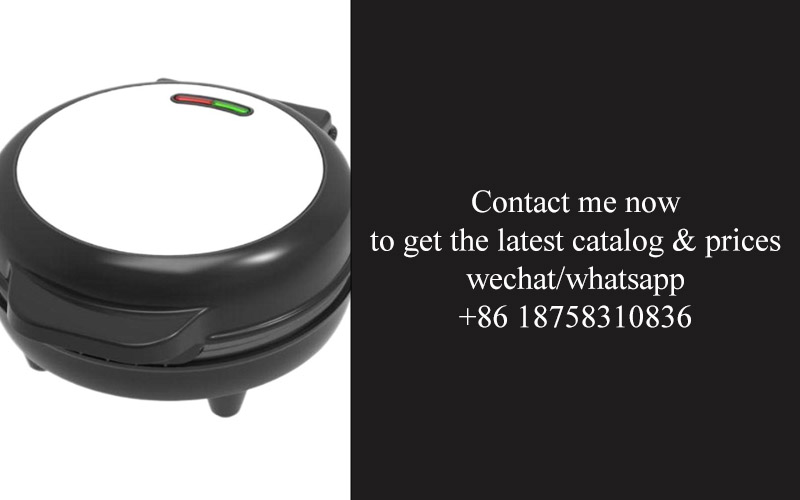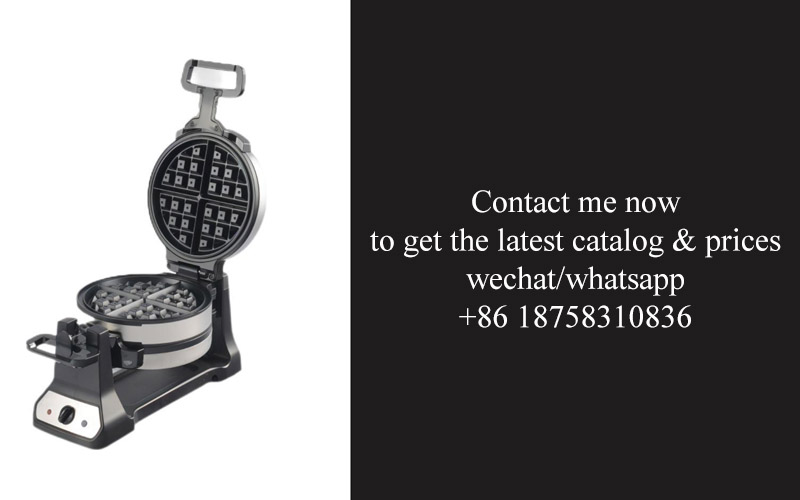Address
304 North Cardinal
St. Dorchester Center, MA 02124
Work Hours
Monday to Friday: 7AM - 7PM
Weekend: 10AM - 5PM
Address
304 North Cardinal
St. Dorchester Center, MA 02124
Work Hours
Monday to Friday: 7AM - 7PM
Weekend: 10AM - 5PM

In the ever-evolving landscape of kitchen technology, the air fryer has emerged as a game-changer, redefining the way we cook and enjoy our meals. This shift towards healthier, more convenient cooking methods has spurred innovation in design and functionality, making these appliances not just kitchen gadgets but integral components of modern culinary experiences. Join us as we delve into the fascinating world of the automated air fryer assembly line and its impact on the market, exploring how it’s reshaping the future of home cooking.
Air fryers have quietly but steadily been making waves in the culinary landscape, capturing the imagination and kitchens of many around the world. This nifty appliance has emerged as a beacon of innovation in the home kitchen, offering a healthier alternative to traditional frying methods without sacrificing flavor.
The roots of this surge can be traced back to a desire for healthier cooking options. With the increasing awareness of dietary health and wellness, consumers have been on the lookout for ways to enjoy their favorite fried foods with fewer calories and less oil. Enter the air fryer, a game-changer that uses hot air circulation to cook food, thereby reducing the amount of fat needed.
As the health trend continued to gain momentum, so did the demand for air fryers. These devices quickly became a must-have in fitness-conscious households, as they allowed for the preparation of crispy, golden-brown foods like fries, chicken, and vegetables, all while maintaining a healthier profile.
Another factor contributing to the rise of air fryers is the convenience they offer. Unlike deep fryers, which require substantial amounts of oil and careful monitoring, air fryers are a breeze to use. They heat up quickly, cook food evenly, and clean up easily. This ease of use has made them a favorite among busy professionals, families, and anyone looking to simplify their cooking routine.
Moreover, the compact and sleek design of air fryers has made them a stylish addition to kitchen countertops. No longer just a gadget for the health-conscious, air fryers have become a status symbol, reflecting the modern, minimalist aesthetic that many seek in their home decor.
The versatility of air fryers has also played a significant role in their popularity. They can do more than just fry; many models also offer roasting, baking, and dehydrating capabilities. This multipurpose functionality means that a single air fryer can replace multiple appliances, further enhancing its appeal to consumers looking to streamline their kitchenware.
The rise of air fryers has not been without competition. Convection ovens, which share some similarities with air fryers, have also seen a rise in popularity. However, air fryers have managed to carve out a niche for themselves by focusing on the convenience and health benefits that their hot air technology offers.
Marketing and branding have also played a crucial role in the air fryer’s ascent. Manufacturers have been quick to highlight the benefits of their products, from the reduction in cooking time to the elimination of greasy messes. Influencers and celebrity chefs have taken notice, often featuring air fryers in their recipes and promoting them as a way to maintain a healthy lifestyle without compromising on taste.
The impact of the air fryer’s rise has been felt far beyond the kitchen. It has influenced the way manufacturers design appliances, pushing them to incorporate healthier cooking options into their product lines. It has also sparked a wave of innovation, with companies constantly seeking new ways to improve the technology and expand the capabilities of these compact devices.
In conclusion, the rise of air fryers is a testament to the changing landscape of home cooking. They have become more than just a tool for preparing meals; they represent a shift towards healthier, more convenient, and stylish living. As the trend continues to grow, it’s clear that the air fryer has become a staple in the modern kitchen, here to stay and likely to evolve with new and exciting features.

The assembly line, a cornerstone of modern manufacturing, has undergone a remarkable evolution since its inception. Initially, the concept was a simple solution to the pressing need for increased production efficiency. Over time, it has transformed into a sophisticated system that drives innovation and efficiency across various industries.
In the early 20th century, the assembly line was born out of necessity. Henry Ford’s introduction of the moving assembly line for the Ford Model T in 1913 was a pivotal moment. It replaced the traditional “job shop” system, where workers would move from one task to another, with a method where each worker performed a single task repeatedly, along with their fellow workers, in a linear sequence. This approach drastically reduced the time it took to produce a car, from 12 hours to just 93 minutes.
As the years progressed, the assembly line expanded beyond automotive manufacturing. It was adopted by various industries, from electronics to aerospace, to streamline production processes. The key to this expansion was the development of standardized components and parts, which made it easier to assemble products with interchangeable parts.
The introduction of the conveyor belt further revolutionized the assembly line. It allowed for the continuous movement of products through the production process, reducing the need for manual handling and further increasing efficiency. The conveyor belt system also facilitated the development of automated machinery, which could perform tasks with precision and consistency.
The 1950s and 1960s saw the integration of automation into assembly lines. The advent of programmable logic controllers (PLCs) and robotic arms marked a significant shift. These innovations allowed for greater flexibility and the ability to handle more complex tasks, such as welding, painting, and assembling intricate parts.
The evolution of assembly lines continued with the rise of computer-aided design (CAD) and computer-aided manufacturing (CAM). These technologies enabled designers and engineers to create detailed blueprints and manufacturing instructions, which could then be directly translated into assembly line operations. This integration of digital tools with physical production processes led to even greater efficiency and reduced errors.
In the late 20th century, the concept of lean manufacturing, inspired by the Toyota Production System, became popular. Lean principles focused on reducing waste and improving flow in the production process. This led to the development of more flexible and modular assembly lines, capable of quickly adapting to changes in demand and product design.
The 21st century brought about a new wave of assembly line innovation, driven by the Internet of Things (IoT) and Industry 4.0. These advancements allow for real-time data collection and analysis, enabling predictive maintenance and adaptive production. Smart assembly lines can now autonomously adjust to changes in the manufacturing environment, such as equipment malfunctions or supply chain disruptions.
Moreover, the rise of additive manufacturing, or 3D printing, has begun to complement traditional assembly lines. This technology allows for the creation of complex parts on-demand, reducing the need for inventory and enabling customization at scale.
Today’s assembly lines are not just about producing goods; they are about creating value through intelligent design, automation, and continuous improvement. The evolution of the assembly line has been a testament to human ingenuity and the relentless pursuit of efficiency in the face of ever-changing consumer demands.

The automated air fryer assembly line represents a quantum leap in the appliance manufacturing sector, transforming the way we think about kitchen technology. This innovative approach has not only streamlined production but also elevated the quality and efficiency of air fryers. Let’s delve into the specifics of this game-changing development.
Manufacturers have long sought to enhance productivity without compromising on quality. The introduction of the automated air fryer assembly line is a testament to this quest. This line integrates cutting-edge robotics and artificial intelligence to manage every aspect of the production process, from the initial stages of component assembly to the final quality checks.
In the past, the assembly of an air fryer would have been a manual task, requiring skilled laborers to piece together various parts. Now, robots handle tasks like screwing in components, aligning parts, and applying heat-seal adhesives with pinpoint accuracy. This shift not only reduces the potential for human error but also increases the speed of production, leading to shorter lead times for consumers.
One of the standout features of the automated assembly line is its adaptability. With the ability to quickly reprogram and reconfigure, these lines can be easily adapted to produce different models or even entirely new products. This flexibility is crucial in a market where consumer preferences and technological advancements are constantly evolving.
The precision of the automated air fryer assembly line is unparalleled. Each air fryer that rolls off the line is subjected to a rigorous quality control process. Sensors and vision systems inspect the units for any defects or irregularities, ensuring that only the highest standard of product reaches the consumer. This attention to detail not only enhances the user experience but also builds trust and brand loyalty.
Energy efficiency is another area where the automated assembly line shines. By optimizing the manufacturing process, these lines consume less energy and produce fewer waste materials. This sustainability factor is increasingly important to both manufacturers and environmentally conscious consumers.
Moreover, the integration of AI into the assembly line has opened new possibilities. AI algorithms can predict maintenance needs, preventing costly downtime and ensuring that the line operates at peak efficiency. These smart systems also learn from each cycle, continuously improving the assembly process and the quality of the end product.
The introduction of the automated air fryer assembly line has also had a significant impact on the workforce. While it has reduced the need for manual labor, it has also created new job opportunities in programming, maintenance, and oversight. Workers now have the chance to develop skills in robotics and automation, leading to a more skilled and adaptable workforce.
In terms of design, the automated assembly line has facilitated the inclusion of innovative features in air fryers. With robotics handling the intricate details of assembly, designers can focus on creating new and unique product designs that were once too complex or expensive to produce manually.
The financial implications of this transformation are substantial. By reducing labor costs and increasing production speed, manufacturers can offer air fryers at more competitive prices. This accessibility makes air fryers a more attractive option for a wider range of consumers.
As we look to the future, the automated air fryer assembly line is just the beginning. The same principles of automation and AI are likely to be applied to other kitchen appliances, leading to an era of smart and efficient home technology. The potential for advancements in this area is vast, and the benefits to consumers, manufacturers, and the environment are clear.
In essence, the automated air fryer assembly line is a game-changer that has redefined the landscape of kitchen appliance manufacturing. It represents a convergence of technology, efficiency, and innovation, setting the stage for a new era of cooking and culinary experiences.

In the realm of kitchen appliance manufacturing, the automated air fryer assembly line stands as a testament to technological advancement. This line is a marvel of precision and efficiency, composed of several key components that work in harmony to produce high-quality air fryers. Let’s delve into these integral parts.
The heart of any assembly line is its conveying system, which moves the air fryer components and subassemblies through the various stages of production. This system is designed to ensure a smooth flow, minimizing downtime and the risk of human error. High-tech conveyors, often equipped with sensors and programmable logic controllers (PLCs), guide parts with pinpoint accuracy.
Robots have become a cornerstone of modern assembly lines, and the air fryer line is no exception. These robots are programmed to perform a range of tasks, from handling and placing components to assembling parts with incredible precision. Their ability to work tirelessly around the clock without fatigue or breaks makes them invaluable in maintaining high production rates.
In the automated air fryer assembly line, the precision of assembly is paramount. Specialized machines and robotic arms are responsible for aligning and securing components such as heating elements, fans, and control panels. These tasks require a level of accuracy that would be challenging for human workers to achieve consistently.
Quality control is a non-negotiable aspect of the assembly line. Automated inspection systems, including vision systems and sensors, monitor each part and assembly at various stages. These systems can detect defects, misalignments, or missing components, triggering immediate action to correct issues before they affect the final product.
Modern assembly lines are not just about physical movement and precision; they are also about data. The integration of IoT (Internet of Things) devices allows for real-time monitoring and analysis of the production process. This connectivity enables predictive maintenance, where the system can anticipate and prevent potential breakdowns, ensuring a continuous flow of high-quality air fryers.
One of the challenges in kitchen appliance manufacturing is the need for customization. The automated air fryer assembly line addresses this by incorporating flexible automation systems. These systems can be reprogrammed to accommodate different models or variations of air fryers, allowing manufacturers to respond quickly to market demands.
In an era where sustainability is a key concern, the automated air fryer assembly line is designed with energy efficiency in mind. Advanced motors, energy-saving lighting, and optimized processes reduce the environmental impact of production. Additionally, the use of recycled materials and eco-friendly packaging is becoming more prevalent.
Despite the automation, the human workforce remains a critical component. Operators are responsible for overseeing the line, ensuring that all systems are functioning correctly, and making adjustments as needed. They also play a role in maintenance and troubleshooting, leveraging their experience to keep the assembly line running smoothly.
Once the air fryers are assembled and inspected, they move to the packaging area. Here, automated systems handle the boxing, labeling, and preparation for shipping. This final stage is where the product is transformed from a raw assembly into a finished, ready-to-sell item.
In summary, the key components of an automated air fryer assembly line represent a blend of cutting-edge technology and meticulous design. From the conveyors and robots to the quality assurance systems and data-driven insights, each element plays a vital role in creating a product that not only meets but exceeds consumer expectations.

The air fryer, once a niche appliance, has now become a staple in many kitchens around the world. This shift in consumer preference has been fueled by innovation in design and functionality, transforming the way we cook and enjoy our meals. Let’s delve into some of the key advancements that have made the air fryer a must-have kitchen gadget.
Compact and Stylish DesignsAir fryers have shed their bulky, industrial origins to embrace sleek and modern aesthetics. The latest models are designed to be space-efficient, often featuring a compact footprint that fits perfectly on kitchen countertops. Manufacturers have also paid close attention to the visual appeal, with a variety of colors and finishes available to match different kitchen decors.
Advanced Cooking TechnologiesThe core of any air fryer’s innovation lies in its ability to mimic the crispy texture of deep-fried food with minimal oil. Modern air fryers use a combination of hot air circulation and high-speed spinning fans to achieve this effect. This technology not only reduces the fat content but also shortens cooking times, making it a healthier alternative to traditional frying methods.
Programmable Settings and PresetsOne of the standout features of modern air fryers is their programmable settings. Users can now set specific temperatures and cooking times for a wide range of foods, from vegetables to meats to even desserts. Many models come with pre-programmed recipes and smart technology that adjusts cooking parameters for optimal results, ensuring that even the most complex dishes can be prepared with ease.
Enhanced Safety FeaturesSafety has always been a priority in kitchen appliance design, and the air fryer is no exception. Modern models often include features like automatic shut-off, which turns off the appliance if the door is opened or if the unit reaches an unsafe temperature. Some even have a lock to prevent accidental operation, making them suitable for homes with children.
Multi-Functional CapabilitiesAir fryers have expanded beyond their initial purpose of frying to become multi-functional cooking appliances. Many models now offer additional cooking modes, such as baking, roasting, and grilling. This versatility allows users to prepare a wide array of dishes, from crispy French fries to roasted chicken and even homemade bread.
Smart IntegrationIn the era of smart home technology, air fryers have not been left behind. Some models can be controlled remotely via smartphone apps, allowing users to start, pause, or monitor their cooking process from anywhere. This integration also often includes access to a library of recipes and cooking tips, making the air fryer an interactive and informative appliance.
Energy EfficiencyEnergy conservation is a significant concern for many consumers, and air fryers have responded with improved energy efficiency. The hot air circulation method used in air fryers requires less energy than conventional ovens, resulting in lower electricity bills and a smaller carbon footprint.
Easy CleaningCleaning up after cooking is often a chore, but the design of modern air fryers has made this task much simpler. Many models have non-stick baskets that are easy to remove and clean. Some even have dishwasher-safe components, ensuring that the post-cooking routine is as quick and straightforward as possible.
Customizable Cooking ExperiencePersonalization is key in today’s consumer market, and air fryers have adapted by offering customizable settings. Users can adjust the temperature and cooking time to suit their specific preferences and dietary needs. This level of control allows for a more tailored cooking experience, whether you’re following a strict diet or simply enjoy experimenting with new flavors.
Noise ReductionEarly air fryers were known for their loud operation, but advancements in technology have significantly reduced noise levels. Modern air fryers are designed to operate quietly, allowing users to enjoy their cooking without the distraction of a noisy appliance.
Innovation in design and functionality has propelled the air fryer from a curious kitchen gadget to a must-have appliance in many homes. As technology continues to evolve, we can expect even more exciting features and capabilities that will further enhance the air fryer’s role in the modern kitchen.

In the pursuit of excellence in kitchen appliances, quality control and consistency are paramount. The meticulous process of ensuring that each air fryer meets the highest standards is a testament to the dedication of manufacturers. Here’s a delve into the intricacies of maintaining quality and consistency in the automated air fryer assembly line:
The assembly line is equipped with advanced sensors and inspection systems that monitor every stage of production. These systems can detect even the smallest defects, such as a misaligned part or a minor scratch, ensuring that only perfect air fryers reach the consumer.
One key aspect of quality control is the rigorous testing of the air fryers’ heating elements. Each unit is subjected to temperature checks and performance trials to guarantee that it operates within the specified range and retains heat efficiently. This ensures that users can enjoy consistent cooking results.
Consistency in the manufacturing process is achieved through the use of precision machinery. The automated assembly line is calibrated to exacting tolerances, reducing the margin of human error. This precision is vital for components like the fry basket, which must fit snugly to ensure even cooking and easy cleaning.
Regular maintenance and calibration of the assembly line’s equipment are crucial to maintaining quality. Engineers and technicians perform routine checks to ensure that all machinery is operating at peak efficiency. This proactive approach prevents issues that could compromise the quality of the final product.
The consistency of materials used in air fryer production is another critical factor. High-quality stainless steel, durable plastics, and other materials are sourced from reputable suppliers. These materials are not only reliable but also contribute to the longevity and performance of the air fryers.
During the assembly process, each component is meticulously checked for quality. This includes visual inspections, functional tests, and durability assessments. The automated line can quickly identify and segregate defective parts, preventing them from being integrated into the final product.
The packaging process is also subject to strict quality control measures. Air fryers are wrapped and boxed with precision, ensuring that they arrive at the customer’s doorstep in perfect condition. This attention to detail minimizes the risk of damage during shipping and enhances the overall customer experience.
Furthermore, the assembly line incorporates feedback mechanisms that allow for continuous improvement. Data collected from the production process is analyzed to identify areas for enhancement. This data-driven approach ensures that the quality and consistency of air fryers are continually refined.
In the realm of safety, the automated air fryer assembly line adheres to stringent safety protocols. Regular safety audits and employee training programs ensure that all workers are well-versed in the handling of machinery and materials. This commitment to safety not only protects the workers but also ensures that the air fryers are free from potential hazards.
The final stage of quality control involves comprehensive testing of the entire air fryer unit. This includes functionality tests, user interface checks, and safety inspections. Only after passing these rigorous tests is an air fryer deemed ready for market.
In conclusion, the pursuit of quality and consistency in the automated air fryer assembly line is a multifaceted endeavor. From the sourcing of materials to the meticulous assembly and final testing, every step is designed to deliver a product that meets the highest standards. This unwavering commitment to excellence is what sets premium air fryers apart in the competitive kitchen appliance market.

In the ever-evolving landscape of kitchen appliances, the introduction of the automated air fryer assembly line has undeniably left its mark. This technological marvel has not only transformed the way air fryers are manufactured but has also reshaped the market in several profound ways.
The streamlined process of the automated assembly line has led to a significant reduction in production time. This efficiency translates to quicker turnaround for retailers, ensuring that shelves are always well-stocked with the latest air fryer models. Consumers, in turn, benefit from the constant availability of these innovative appliances.
With the rise of the automated assembly line, the cost of manufacturing air fryers has seen a notable decline. This cost-effectiveness has allowed manufacturers to offer more competitive pricing, making high-quality air fryers accessible to a wider audience. As prices drop, consumer interest surges, leading to increased market share for brands that embrace automation.
The integration of advanced technologies within the automated assembly line has also led to a surge in product innovation. Features such as smart temperature control, programmable cooking modes, and integrated recipe guides have become standard in modern air fryers. These innovations not only enhance the user experience but also open up new opportunities for niche markets, such as those catering to specific dietary preferences or cultural cuisines.
The rise of the automated air fryer assembly line has also had a significant impact on the global supply chain. As production becomes more efficient and scalable, manufacturers can easily adjust to fluctuating demand, ensuring that products are delivered to market at the right time and in the right quantities. This flexibility is crucial in the rapidly changing consumer electronics sector.
Moreover, the market has witnessed a shift in consumer behavior. The ease of use, health benefits, and convenience offered by air fryers have made them a staple in many homes. The automated assembly line has allowed for consistent product quality, which has bolstered consumer trust and loyalty.
The environmental impact of kitchen appliances is a growing concern for many consumers. The automated assembly line, with its precision and reduced waste, aligns with these sustainability goals. By minimizing the use of materials and energy, manufacturers are able to produce air fryers that are more environmentally friendly, appealing to eco-conscious consumers.
The market’s response to the automated air fryer assembly line has been overwhelmingly positive. Sales have soared, and the segment has become a significant part of the overall kitchen appliance market. This success has prompted other appliance manufacturers to explore automation in their production processes, leading to a ripple effect across the industry.
The rise of the automated air fryer assembly line has also sparked a competitive environment. Brands are continuously pushing the boundaries of what’s possible with air fryer technology, leading to a steady stream of new features and designs. This competition drives innovation and keeps the market dynamic, ensuring that consumers always have access to the latest and greatest kitchen appliances.
The market’s expansion has also led to the creation of new business opportunities. From component suppliers to software developers specializing in machine learning for predictive maintenance, the ecosystem around the automated air fryer assembly line is thriving. These ancillary businesses benefit from the success of the assembly line, creating a virtuous cycle of growth and innovation.
In conclusion, the impact of the automated air fryer assembly line on the market is multifaceted. It has driven efficiency, affordability, innovation, and sustainability, all of which have contributed to the air fryer’s meteoric rise in popularity. As the market continues to evolve, the assembly line will undoubtedly play a pivotal role in shaping the future of kitchen appliances.

In the realm of kitchen appliance manufacturing, the evolution of assembly lines has been a relentless journey towards efficiency, precision, and innovation. As we delve into the future of automated assembly lines, we glimpse a landscape where technology will continue to redefine the way we produce and interact with our kitchen essentials.
Automation has already transformed the production process, and the future promises even more groundbreaking advancements. Here’s a look at what lies ahead:
Smart Integration: Imagine a world where assembly lines are not just automated but also interconnected. Future lines will be capable of communicating with each other, sharing real-time data, and optimizing production based on predictive analytics. This smart integration will lead to more agile and responsive manufacturing processes.
Adaptive Robots: The robots of tomorrow will not be limited to repetitive tasks. They will be adaptive, learning from each assembly process and improving their efficiency over time. These intelligent machines will be capable of handling a wider range of tasks, from complex assembly to packaging, and even customer service.
Advanced Materials and Processes: The use of advanced materials, such as carbon fiber and 3D printing, will revolutionize the assembly of air fryers and other kitchen appliances. These materials offer greater durability, lighter weight, and the ability to create intricate designs that were once impossible.
Energy Efficiency: With the growing concern for the environment, the future of automated assembly lines will see a significant focus on energy efficiency. New technologies will reduce waste and lower the carbon footprint of manufacturing processes, making them more sustainable.
Customization at Scale: Customization has traditionally been seen as a luxury reserved for high-end markets. However, advancements in automation will enable manufacturers to offer personalized products at scale. Customers will be able to choose specific features and even colors for their appliances, all within a streamlined production process.
Remote Monitoring and Maintenance: The future assembly lines will be equipped with IoT (Internet of Things) capabilities, allowing for remote monitoring and maintenance. This means that any issues can be detected and addressed before they lead to downtime, ensuring a seamless production flow.
Collaborative Robots (Cobots): Cobots, or collaborative robots, will become more prevalent. These robots are designed to work alongside humans, not replace them. They will enhance productivity and safety by handling hazardous or repetitive tasks, allowing human workers to focus on more complex, creative, and value-added activities.
Artificial Intelligence and Machine Learning: AI and ML will play a pivotal role in the future of automated assembly lines. These technologies will enable machines to analyze vast amounts of data, predict maintenance needs, and optimize production processes in real-time, leading to higher yields and fewer errors.
Human-Centric Design: While technology will drive much of the future, there will be a strong emphasis on human-centric design. The working environment will be designed to enhance worker satisfaction and well-being, with ergonomic layouts, advanced safety features, and opportunities for skill development.
Global Collaboration: The future of automated assembly lines will be characterized by global collaboration. Companies will work together to share knowledge, resources, and technologies, leading to a more interconnected and efficient global supply chain.
As we move forward, the automated assembly line will not only be a game-changer in the production of air fryers and other kitchen appliances but will also be a cornerstone of a new era in manufacturing. The future holds a promise of continuous improvement, sustainability, and the ability to meet the ever-changing demands of consumers around the world.

In the realm of kitchen appliance manufacturing, several companies have turned heads with their innovative automated assembly lines. Here are a few success stories that showcase the remarkable achievements in this field:
These case studies highlight the diverse strategies and technologies that have contributed to the success of automated air fryer assembly lines. From quality control to employee training, each company has found its own unique path to excellence in the competitive kitchen appliance market.

The automated assembly line has transformed the landscape of manufacturing, and its impact is undeniable. From streamlining processes to enhancing product quality, these lines have become the backbone of modern production. Let’s delve into some of the key aspects that make these automated assembly lines so pivotal in the industry.
Automation has revolutionized the way we think about efficiency. By replacing manual labor with machines, companies can produce goods at a much faster rate. This increased speed not only cuts down on production time but also reduces the likelihood of errors that can occur with human hands. The result is a more streamlined and precise production process.
The precision of automated assembly lines is another critical factor. Machines are programmed to execute tasks with pinpoint accuracy, ensuring that every component is fitted perfectly. This level of precision is especially crucial in the manufacturing of complex products like air fryers, where even the smallest miscalculation can lead to a defective unit.
Maintaining consistent quality is essential in any industry, and the automated assembly line has greatly contributed to this. With automated systems, there is no room for variability in the production process. Each step is standardized, and any deviations are immediately detected and corrected. This consistency is vital for brand reputation and customer satisfaction.
Safety is also a significant benefit of automated assembly lines. By removing human workers from the most hazardous tasks, these lines reduce the risk of accidents and injuries. The machinery is designed to operate safely, with safety features that prevent malfunctions and protect workers.
The cost-effectiveness of automated assembly lines cannot be overstated. While the initial investment in machinery can be substantial, the long-term savings are considerable. Automation reduces labor costs, minimizes waste, and increases production volume, all of which contribute to a healthier bottom line.
Innovation in design and functionality has been accelerated by the automation of assembly lines. Companies are now able to experiment with new technologies and incorporate them into their products more quickly. This has led to the development of more sophisticated and user-friendly appliances, such as smart air fryers that can be controlled via a smartphone app.
The environmental impact of manufacturing is a growing concern, and automated assembly lines are helping to address this. By reducing waste and energy consumption, these lines contribute to a more sustainable production process. Companies are also looking into energy-efficient machinery and recycling programs to further minimize their ecological footprint.
The global market has responded positively to the advent of automated assembly lines. Consumers are benefitting from better quality products at competitive prices. The increased speed of production has also allowed companies to respond more quickly to market demands, ensuring that they stay ahead of the competition.
The future of automated assembly lines is poised to bring even more advancements. As technology continues to evolve, we can expect to see more sophisticated machines capable of handling even more complex tasks. This could include the integration of artificial intelligence and machine learning to optimize production processes and anticipate market trends.
The success stories of companies that have embraced automated assembly lines are numerous. For instance, a major appliance manufacturer saw a dramatic increase in production capacity after implementing an automated assembly line. Not only did they experience a surge in output, but the quality of their products also improved, leading to higher customer satisfaction and increased sales.
In conclusion, the impact of automated assembly lines on the manufacturing industry is profound. They have brought about improvements in efficiency, precision, quality, safety, cost-effectiveness, and sustainability. As these lines continue to evolve, their influence is likely to grow, shaping the future of production in ways we are only just beginning to understand.